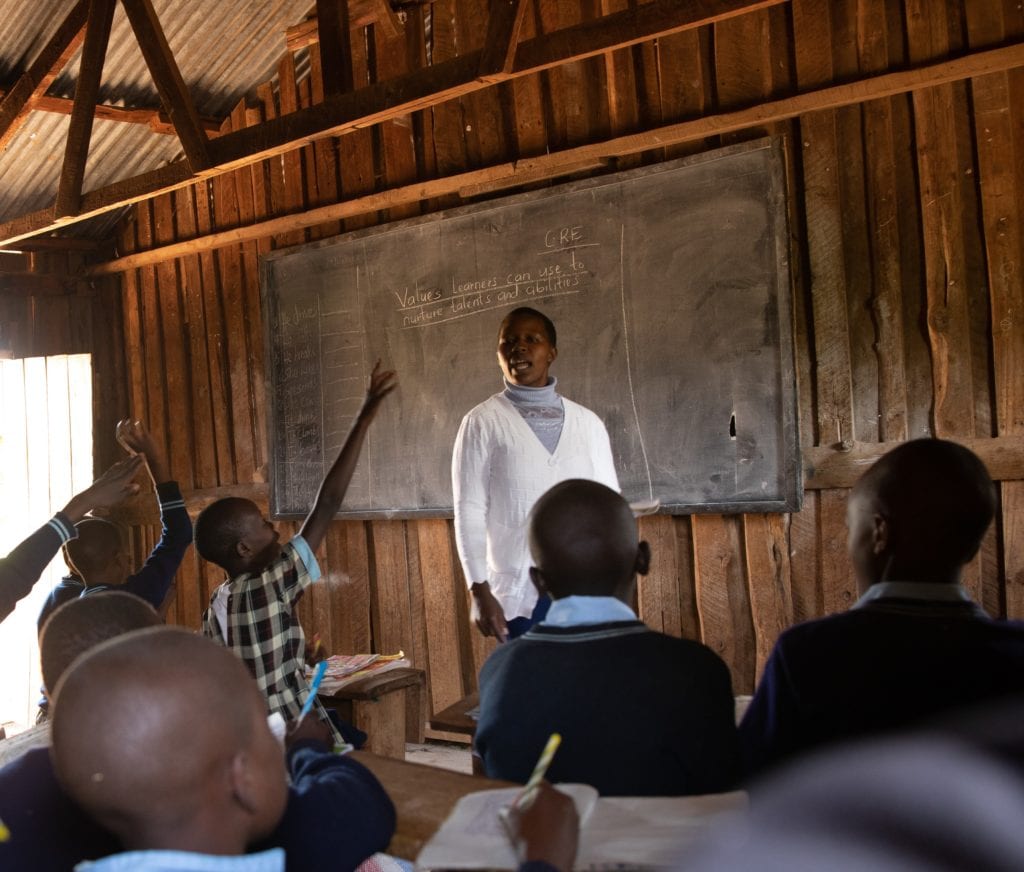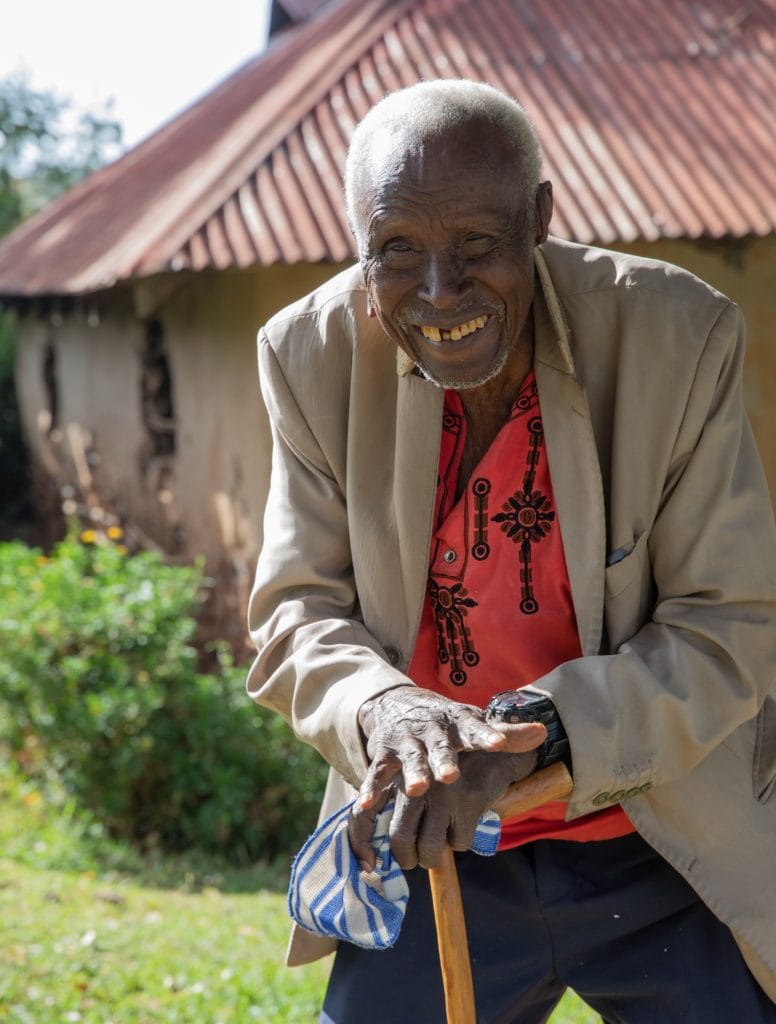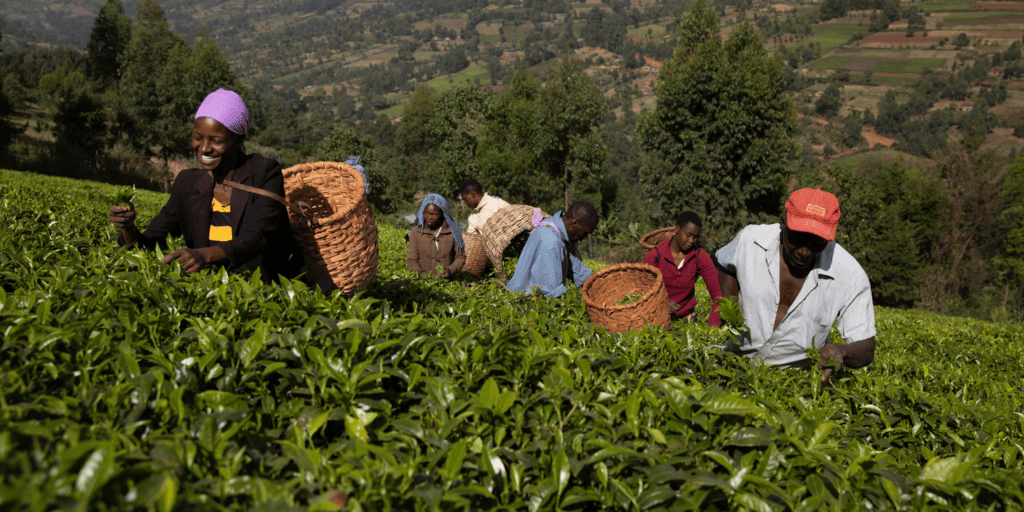
In 1952, Paul Sigira attended an evangelistic campaign in western Kenya and began reading the Bible. Five years later, he became a Seventh-day Adventist. He started meeting with a small group under a tree on his property, which was surrounded by tea fields. It was the genesis of a congregation that would eventually become the Kimogoro Seventh-day Adventist Church. Later, Sigira visited another campus with a church, school, and hospital on-site, and had a vision that Kimogoro should also be a shared campus.
Sigira held onto this dream for years and eventually donated his land on the top of a ridge for a school to be constructed. The Kimogoro Adventist School was established in 1996 with 35 students. Today, the school serves prekindergarten through 12th grade, educating 230 students each year, with a waiting list. Over the past three decades, thousands of children have learned of God’s love for them there and received the best education in the region, driven by dedicated teachers. But though the school offers a high-quality education, Kimogoro’s living and learning conditions are deplorable.
Cramped, rickety dormitory buildings have leaky roofs and termite-ridden frames. Rain, wind, and cold penetrate buildings through huge gaps in the walls. Critters scurry across the dirt floors. And because there isn’t enough space, kids are forced to sleep two, sometimes even three, to a bed. This can severely hurt students’ ability to learn and focus. Without a good night’s rest, it can be hard to concentrate and retain information.
“It normally impacts the learning process because at times, maybe there is coldness,” principal Shadrack Kirui said. “The dorm is being rained on. The children might be sleeping in class because they did not sleep well at night.”




Besides sleeping quarters, other living conditions at Kimogoro are challenging. Bathing happens in a muddy outdoor enclosure with a bucket. There’s no cafeteria — kids must eat outside, scattered under trees. The current kitchen is a smoke-filled outdoor shack that isn’t well sealed; sometimes kids find things in their food.
“You know those cockroaches that get into the food?” student Sharon Ngatia asked. “When you eat, you may just get those cockroaches in the food.”
Lack of water was another challenge that plagued the school for years. Without a water source on top of the steep hill where Kimogoro was built, students had to make the long walk down to a small river each day to fetch water and bathe. They also brought their clothes to that river to do laundry, and once clean, made the burdensome hike back up the hill with the full jugs of water needed for the school to function. This daily chore was tiring, but worse still was that the water in this river was brown and could make people sick. Yet without another option, they used it for many years.
With all Kimogoro’s adversities, one might assume that students wouldn’t want to be there. But the truth is that despite all its problems, kids and their parents love the school and especially appreciate the teachers. Marzi Chelangat is a mother of two students at Kimogoro, but her third child attends a local government school.
“The one that is in public [school], he returns home, and the books, there is nothing in the books,” Chelangat said. “If I ask, ‘Why? Why did you not write?’ he’s telling me, ‘The teacher was absent.’ After lunch they returned home, and nothing was written. Nothing. They are not writing anything.”



In contrast, Kimogoro’s staff is what draws people to the school, even though the physical environment is lacking. The teachers care deeply for the students, not only academically but also as individuals. The rapport created allows for effective instruction, resulting in the higher test scores that make Kimogoro a desirable school. In this way, good teachers are a part of a positive cycle — they can help recruit more students, which brings in more tuition to improve the program. But the opposite is also true — if good teachers don’t stay at a school because of the poor conditions, the program suffers and fewer students attend. Could Kimogoro avoid this negative cycle?
In 2019, the beginnings of change came to this campus amid the tea leaves. Maranatha saw the need for accessible, clean water at Kimogoro and drilled a well so students could have more time for their education.
“We have been performing well because there’s water,” Ngatia said. “Everything is available. And when we have water, we can wash our clothes at the right time, and we can [still] run to class for our various studies.”
Now, more improvements are on the way. With long-term school projects in Kenya at the Kiutine and Kajiado Adventist schools coming to completion, Maranatha has shifted its focus to Kimogoro. The transformation is starting with the construction of new dorms with restrooms and showers, as well as a kitchen and cafeteria.
Sigira is overjoyed with how far his dream has come from decades ago. These new facilities will improve students’ daily hygiene, nutrition, sleep, and concentration. This institution will continue to be the best academic option in the area, and the new buildings will make it an adequate place to live, ensuring that hundreds more children will be led to Jesus for years to come.
Church leaders finds that institutions like Kimogoro are a crucial tool in spreading the gospel in Kenya, not just as a supplement to other initiatives but as a leading source of soul-winning.
“In one year, we baptized about 150,000 students,” said Andrew Mutero, education director for the Adventist Church in East Central Africa. “We baptized more people than are baptized in any public campaign in our division. So, evangelism in Adventist schools is real.”
This soul transformation can be felt at Kimogoro too, just as Sigira envisioned it. As Maranatha’s in-country crew and volunteers begin the work, the campus is set to securely shine its light on the hilltop for generations to come. The ambitious dream of one man will be amplified through construction and the willing hearts of everyday people like Maranatha donors, all desiring to share Jesus with young people until He comes back.
The original version of this story was posted in Issue 2 2023 of The Volunteer magazine. Maranatha Volunteers International is an independent supporting ministry and is not operated by the corporate Seventh-day Adventist Church.